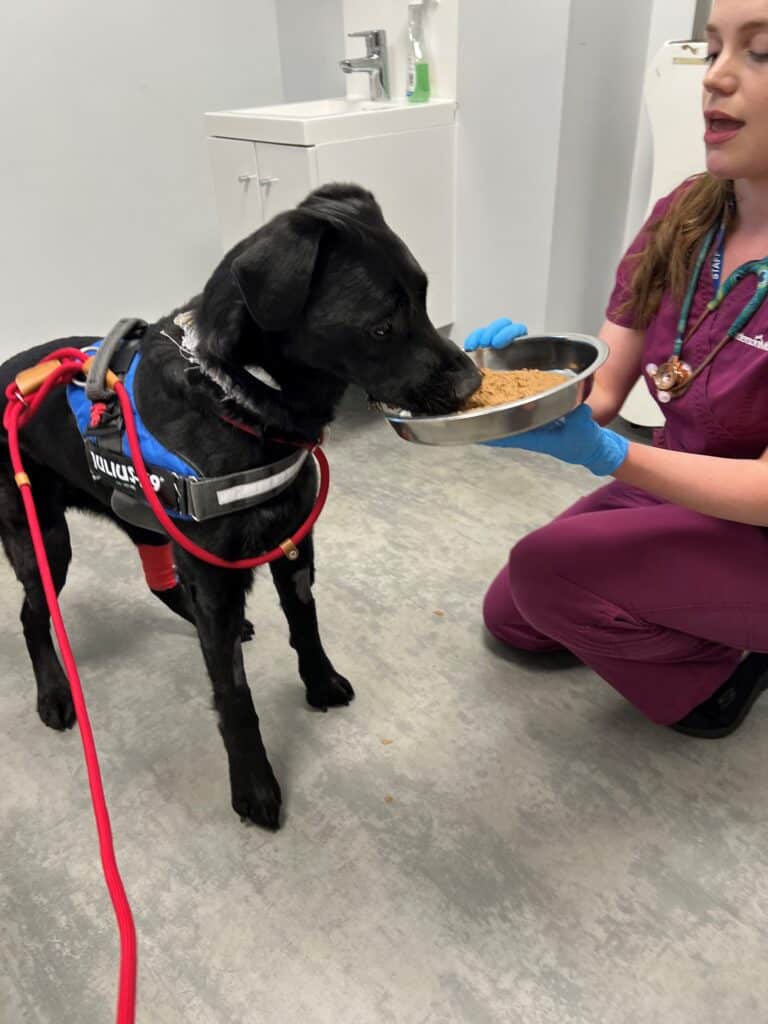Eddie’s Toxic Tetanus Story

Eddie, a lovely 5-year-old Labrador loves his trips to the beach and chasing balls into the sea. However after a recent trip his owners were worried about him as he started vomiting that night. They took him to their local vet who treated him for the vomiting with fluid therapy and anti-sickness medication for a few days. This was in case he had swallowed too much seawater, which sometimes happened when he fetched his ball from the sea.
After a few days their vet undertook an x-ray to see if he had a blockage because he wasn’t responding to treatment for the vomiting, but that didn’t show a blockage so his owners got increasingly worried about him as did the vet at their practice.
They saw another vet who started to suspect tetanus because he had become anorexic and developed trismus (lock jaw), his ears were also retracted, and he developed a risus sardonicus expression (a fixed facial expression) so she referred him straight to our Internal Medicine team.

He was seen by Victoria Neale, a Resident in our Internal Medicine team who, due to this fixed expression, generalised stiff gait and muscle rigidity confirmed it was a tetanus infection.
Tetanus is caused by neurotoxins released by the bacterium Clostridia tetani which originates from the soil and can enter the body through open wounds or injuries, most often on the distal limbs or tooth roots. Most tetanus cases develop five to 12 days after injury and diagnosis in dogs is generally based on a consistent physical examination and history; however a wound or source of infection is not always obvious, and that was the case with Eddie.
Tetanus can be graded in its severity into four classes, with a worse prognosis associated with higher classes. Eddie presented with class II disease (difficulty eating and increased muscle tone). At least 50% of dogs will progress to recumbency (lying down) within around four days, so it is important that tetanus cases are identified and treated as quick as possible. The prognosis for dogs who remain ambulatory (able to walk) is excellent but is more guarded for dogs who become recumbent, and cases can take one to two weeks to reach maximum severity.

Eddie was started with supportive nursing care including fluid therapy, tube feeding and antibiotic therapy (metronidazole, to eliminate the Clostridiia). As he came to us in the early stages of disease Victoria wanted to halt progression to the generalised form in any way possible and felt that he could possibly benefit from tetanus antitoxin (TAT). The efficacy of this treatment is uncertain, with no studies having proven a definite benefit however it is a good treatment to try to slow the progression.
Eddie was hospitalised for just over a week and looked after day and night by our experienced nursing team. He responded well to the treatment and has now made a full recovery with his owners reporting that he is doing well. We are so pleased for Eddie and his family.
